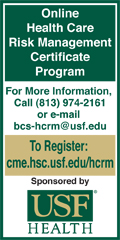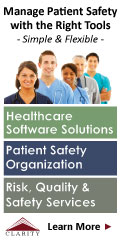 |
 |
 |

January / February 2008

Telemedicine:
An International Quality Care Solution
By Steven R. Normandin
| |

 |
Video-conferencing unit transmitting picture of inner ear.
Photo courtesy of AMD Telemedicine.
 |
Telemedicine, a partnership of sophisticated, 21st century disciplines, is helping to improve the quality of healthcare around the world. In the most remote parts of Eastern Europe, Central Asia, Pakistan, and Africa, as well as the United States, healthcare professionals often forego building additional health facilities, and instead, use digital data, innovative telemedical devices, and telecommunications to save lives.
A Real Opportunity to Improve the Level of Care
Telemedicine — the process that allows healthcare professionals to use "connected" medical devices in the evaluation, diagnosis, and treatment of patients in other locations — can deliver on the promise of providing quality care to those who live in the remote corners of the earth.
Though a relatively new concept to many within the global healthcare community, telemedicine (telehealth or e-health, as it is also called) is becoming increasingly important because it can improve diagnoses, speed treatment, and lower costs. High-tech advances in an entire suite of telemedicine technologies make these improvements possible.
From live videoconferencing to store-and-forward audio and image capture, to the collection of patient information that can be merged into a database or printed for storage in the patient's medical record, telemedicine is now able to provide both the patient, on one end, and the physician, at the other, a new level of service.
According to research reports from independent market analyst group Datamonitor, the worldwide market for clinical telemedicine is expected to grow at a rate of 9.9% over the next 5 years, the overall global telehealth market (including home telehealth) will exceed $8 billion by 2012 (Chang, 2007), and U.S. spending on telehealth is expected to reach $4.5 billion by 2010 — a growth rate of 64%, annually (Datamonitor, 2006).
Additionally, research from the Center for Information Technology Leadership (CITL), a healthcare research organization, confirms that the practice of telemedicine can save money. A November 2007 report (Cusack et al.), The Value of Provider-to-Provider Telehealth Technologies, examines the cost-benefit of using telemedicine/telehealth technologies — such as real-time video and store-and-forward data capture — in emergency rooms, correctional institutions, nursing homes, and physician offices. It concludes that if a telemedicine initiative were nationally implemented for a period of 5 years, the savings could be $4.28 billion per year (pg. 3). The study goes on to state that because it only considered telemedicine in certain settings and not others, its findings may be conservative (pg. 1).
The CITL report also advocates the integration of telemedicine into clinical practice. It states that telemedicine could "... produce quantum leaps in the efficiency of the healthcare system... [Using telemedicine, there could be a]... dramatic reduction in costs associated with decreased unnecessary tests, improved disease prevention, and improved chronic disease management that will come from a broad telehealth deployment, where we can virtually bring the collective wisdom of the entire healthcare system to any patient, anywhere, any time. (pg. 4)"
Why Now?
What is it that is making the telemedicine market mushroom and subsequently engage the research community right now? Datamonitor explains, "...The desire to overcome the challenges facing all healthcare systems, including pressures to increase quality of care while decreasing overall healthcare costs, has lead to a growing interest in the application of telehealth solutions..." (2007).
In addition, costs for bandwidth and telecom equipment have decreased dramatically over the past 10 years. These factors, combined with new sources of international funding, the outbreak of natural disasters, the sudden spread of deadly diseases, a shortage of healthcare providers willing to travel to remote locations to administer care, and the general medical needs of remote populations, make telemedicine a real answer for developing nations and rural communities within established countries. This unique methodology can enable every country to provide its population with an improved quality of care for chronic, as well as emergent, needs.
Nigeria
In Nigeria, instead of building hospitals in remote villages, the country's Ministry of Health, with the help and funding of the its National Space Research and Development Agency (NASRDA), has established a nine-site telemedicine program
NASRDA has installed telemedicine equipment in two Nigerian hospitals, Ibadan Teaching Hospital and Maiduguri Teaching Hospital, as well as some additional, federal clinics throughout the country. Additionally, NASRDA provided a working telemedicine clinic in a bus that travels to the most remote parts of Nigeria to provide primary healthcare services.
Furinshing connectivity for the program, Nigcomsat-1, Nigeria's advanced communication satellite, links the medical data sent from the bus to the in-country hospitals, giving patients and doctors in remote areas access to expert care.
Armenia
In Armenia the healthcare system was in shambles. As a result of civil in-fighting connected with declaring independence from the former Soviet Union, trying to emerge from the shadow of the Soviet's centralized economy, and still struggling from the 1988 Spitak Earthquake, which killed more than 25,000 people and made 500,000 homeless, Armenian healthcare facilities were badly damaged, and its healthcare services had fallen into serious decline.
In 2005, two American nonprofit organizations — Medical Missions for Children (MMC) and Armenia Fund USA — partnered with Armenia's Ministry of Health and other in-country medical groups to open The Stepanakert Polyclinic, a new healthcare facility in the region's capital, to provide a better level of care for seriously ill children and adults.
The group furnished the clinic with telemedical instruments and technologies enabling physician specialists based in New Jersey to examine, diagnose, and advise Armenian physicians on treatment for pediatric illnesses of the upper and lower respiratory tracts and infections of the eye, ear, nose, and throat. Today the clinic and its patients are flourishing.
According to Vahe Aghabegians, executive director of the Armenia Fund. "I visited the Stepanakert polyclinic this past August [2007]. I saw the equipment, which the Armenia Fund U.S. East Coast has provided and got a glimpse of the virtually endless possibilities of telemedicine. Using this cutting-edge technology, doctors in Kharabagh can timely diagnose and consult the patient and thus save lives. It is also a valuable tool for organizing trainings and seminars for the medical staff. With the help of telemedicine, the latest medical know-how will be just a click of a mouse away" (Hyastan All-Armenian Fund, 2007).
Kazakhstan
Kazakhstan is a former Soviet country in central Asia. It is the size of Western Europe with a population of 15 million — 46% of whom reside in rural areas. With an overall population density of 2.5 people per kilometer, there is an ongoing demand for healthcare in remote areas.
Telemedicine proved to be an expedient and effective response to the country's healthcare needs. Kazakhstan's telemedicine initiative was developed and implemented by the Kazakhstan Academy of Preventive Medicine, a multidisciplinary nongovernmental organization (NGO) of public health professionals, physicians, and researchers.
According to Dr. Dana Sharman, director in Kazakhstan of APM-Medlink, a medical support and liaison organization between the Academy and the West, "Rural health in Kazakhstan presents a number of unique challenges, such as inadequate infrastructure, climatic difficulties, isolated, under-trained and overworked health staff, unreliable and expensive transportation, little or no access to health education, great distances from advanced care, limited access to adequate primary healthcare facilities, and inadequate follow-up healthcare."
"The Academy, implementing the telemedicine initiative on behalf of the Kazakh government... has installed telemedicine devices in over 75 rural sites to assist physicians and nurses with teleconsults for remote patient care," says Dr. Sharman. "The program enables the more efficient use of equipment, physicians, nurses, trained non-professionals, and facilities at reduced conventional costs. It entails a paradigm shift from the transportation of patients to specialists to the transportation of information from experts to local provider or patient; i.e., to the point of need."
Kazakhstan has emerged as the leader in telemedicine in Central Asia.
International Organization of Migration
Officials within International Organization of Migration (IOM) divisions in Kenya, Tanzania, Uganda, and Pakistan conduct physical assessment screenings for migrant workers traveling from one country to another to find work. Using telemedical radiological digitized scanning devices, IOM personnel send migrants' digital x-rays to doctors in other locations. Once the doctors have signed off on the x-rays, the IOM can verify that the workers do not have tuberculosis or other communicable diseases and allow them access to a new country (International Organization for Migration, 2003 & 2005).
United States
In addition to improving the quality and speed of providing healthcare to those in remote locations, telemedicine also can provide additional clinical consultation that helps to decrease the risk of misdiagnosis and treatment. This is true not only for international populations but also for U.S. patients in rural communities such as those in Trenton, Missouri.
According to Tina A. Capeder, chief outpatient officer at Trenton's Wright Memorial Hospital, "Access to specialty care is limited in the rural areas because these communities do not have the necessary volume to employ a full-time [specialist] physician. Additionally, physicians located in the metropolitan areas are not interested in providing services in a rural community because of the inefficiencies of traveling and the time away from their office. Consequently, patients must travel to major metropolitan areas to receive specialty care, or worse, remain untreated."
In October 2001 the state of Missouri expanded Medicare coverage for telemedicine. Due to the reimbursement, telemedicine is now a viable option for treatment of the state's rural patients.
Ms. Capader goes on to explain that patients are very appreciative of having the service close to home. Without it, she explains, they would have to spend dear dollars for the half-day trip (each way) to Kansas City. "Telemedicine is a [real] benefit to rural communities" she says.
ER — Anywhere
Deployable telemedicine devices in transportable kit form are also now available for emergency use in the field. They are valuable tools enabling the healthcare provider to quickly assess, evaluate, and triage patients at the scene of an emergency.
On the scene, medical providers need more extensive diagnostic tools to identify and treat injured patients. Able to be used from any location, a deployable telemedicine kit has the capability to capture and store video images such as the inner ear canal, nasal passages, throat, or inner eye. In addition, the healthcare provider can use one of several devices to monitor a patient's cardiac rhythm, measure respiratory volume, or scan an abdomen for trauma injuries.
The idea of a deployable telemedicine kit was introduced in response to a military need in the field. Several telemedical devices were adapted so that they could withstand being moved by heavy transport vehicles over rugged terrain.
Fly in the Ointment
Datamonitor healthcare technology analyst (and author of the August 2007 study) Christine Chang spoke about telehealth to Healthcare IT News (Pizzi, 2007):
... even though there are obvious benefits for telemedicine, the lack of reimbursement continues to be the most pressing challenge to widespread adoption. With no financial incentive for healthcare providers to implement the technology, providers are likely to view telehealth as an increase in workload without a subsequent increase in pay.
Great Expectations
As costs for equipment and IP connections continue to decrease, and natural and man-made disasters increase, the realization that telemedicine is a viable, efficient response for quality care will continue to grow.
Dr. Sharman says, "Telemedicine is the area of modern medicine that could offer [an] efficient solution to healthcare needs in terms of improvement of access to healthcare. It is now one of the fastest growing advances in patient care, information gathering, and treatment. Telemedicine could potentially become a core system providing integrated health services to rural populations. [It is] a unique opportunity to greatly improve health services to rural populations and to reduce certain costs."
Noting that in the long-term "... successful telehealth solutions will be easily incorporated into clinical workflows and linked to other healthcare technologies like electronic health records," Chang further commented, "Telehealth is an emerging market with great potential to increase the quality of care, improve the delivery of care and decrease costs. Today's strong customer base will continue to grow as the benefits of telehealth become more apparent. However, the work flow processes and technology need to improve before telehealth adoption becomes more widespread."
Steven Normandin is president of AMD Telemedicine (www.amdtelemedicine.com), a leading supplier of clinical telemedicine hardware and software applications, installing devices in more than 5,000 sites (major medical centers and remote clinics) in 68 countries worldwide. For many of these installations, AMD has also provided direct, onsite installation and training to support the project with these new types of healthcare diagnostic applications. Normandin may be contacted at snormandin@amdtelemedicine.com.
References
Chang, C. (2007, August 31). Telehealth: Technology needs to meet increasing demand. Datamonitor. Available at http://www.datamonitor.com/industries/news/article/
?pid=AD2924C8-D213-47B0-9BC9-C96AF46E2CDB&type=ExpertView
Cusack, C. M., Pan, E., Hook, J. M., Vincent, A., Kaelber, D.C., Bates, D. W., & Middleton, B. (2007, November). The Value of Provider-to-Provider Telehealth Technologies. Charlestown, MA: Center for Information Technology Leadership, Partners Health Systems. Available at http://www.citl.org/_pdf/CITL_Telehealth_Report.pdf
Datamonitor. (2006, August 3). Telehealth: US spend set for healthy growth. Available at http://www.datamonitor.com/industries/news/article/
?pid=50388431-F69A-4AFF-B181-6013590FF597&type=ResearchWire
Datamonitor. (2007, May 18). Helping healthcare, but can telehealth help itself? (MarketFocus). Available at http://www.datamonitor.com/industries/research/
?pid=BFTC1741&type=Brief
The Hayastan All-Armenian Fund. (2007, September 15). Telemedicine seminars connect health professionals in Yerevan and Stepanakert. Available at http://www.himnadram.org/eng/?go=Issues&id=1630
International Organization for Migration. (2003). Migration Health Annual Report, 2003. Available at http://www.iom.int/jahia/webdav/site/myjahiasite/shared/
shared/mainsite/published_docs/books/migration_health03.pdf
International Organization for Migration. (2005). Migration Health Annual Report, 2005. Available at http://www.iom.int/jahia/Jahia/cache/offonce/pid/1674?entryId=11945
Pizzi, R. (2007, September 4). Telehealth market to expand, report claims. Healthcare IT News. Available at http://www.healthcareitnews.com/story.cms?id=7705
|
 |
 |
 |


















|
 |



